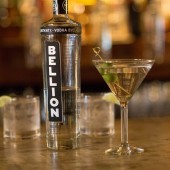“Hmm,” I wondered. “Should I make an apple cake and finish the leftover one from the local Hindinger’s Farm? Or a sour cream coffee cake to use up the already-open Cacique Crema Mexicana Agria (Grade A sour cream)?”
I opted for the latter, thinking about the visual appeal of the vanilla bean specks from the paste. I chose to make it the original way I learned as a preteen when I first learned to bake. That’s with butter, eggs and sour cream. The results? Yummy!
By the way, you can substitute the vanilla paste — pure vanilla containing vanilla bean seeds — one-for-one in any recipe to give an upscale appearance.
And as with all baking (unless the instructions tell you otherwise), be sure to have the eggs, butter and sour cream at room temperature before starting.
Sour Cream Coffee Cake
1/2 lb butter (2 sticks)
1 1/3 c granulated sugar
3 eggs
1 t Nielsen-Massey Vanilla Paste
2 1/2 c all-purpose flour
1 T baking powder
1 t baking soda
1/2 t salt
1 c sour cream
1/2 c chopped nuts (I like toasted almonds)
2 t ground cinnamon
Preheat the oven to 350 F. Grease and lightly flour a 9-inch round springform pan.
Beat the butter and 1 cup sugar until well blended, about 3 minutes with an electric mixer. Add the eggs, one at a time, beating well after each addition. Add the vanilla paste and mix until combined.
In a small bowl, combine the flour, baking powder, baking soda and salt. Add the flour mixture alternately with the sour cream, starting and ending with the flour mixture. The batter will be thick and smooth. Combine the remaining 1/3 cup sugar with the nuts and cinnamon.
Pour half the batter into the prepared pan and spread over the bottom of the pan; sprinkle with half the cinnamon-nut-sugar mixture. Pour in the remaining batter; sprinkle the top with the remaining cinnamon-nut-sugar mixture. Bake for about an hour or until a toothpick inserted into the center of the cake comes out with only a few moist crumbs attached. Let cool on a rack before removing from the springform pan, cutting and serving.
Bryan: From an early age, vanilla has been part of my kitchen and part of my cooking. My first experience was with vanilla extract, a common addition in many spice racks and baking cabinets. Just a drop mixed with milk and frozen bananas was the original milkshake recipe in our house, and the vanilla was the star, lifting the slightly rotten banana’s sweetness to a whole other level.
Though extract is the most common application of the flavoring that I’ve seen, there are certainly others I’ve come across. While whole beans are a bit of a luxury, other forms are more useful for everyday cooking, with pure dried vanilla, vanilla-infused sugars and vanilla bean paste what you’ll likely turn to. “What is vanilla bean paste?” you ask. Well, I was slightly confused as well when I first heard of it.
It sounds like it might come in frosting form. White icing in a can was my vision, but what I found was so far from that. It’s just a liquid, hardly distinguishable from extract at first glance, but quite a bit different upon further inspection. Vanilla bean paste is thicker than vanilla extract, though it’s still a syrupy liquid; nothing like the word “paste” connotes.
Use vanilla bean paste in place of vanilla extract, and in exactly the same measurements. One tablespoon of extract is 1 tablespoon of paste – the only difference is the little black dots, the seeds of the vanilla bean that have been left in the paste mixture to provide the unmistakable vanilla speckling. Consider vanilla bean paste a convenient, inexpensive replacement for whole vanilla beans that will last indefinitely (whole beans dry out).
Add to your homemade ice cream for a different side of vanilla. A real necessity for any vanilla lover.
Eric: Nielsen-Massey has set the bar fairly high for most vanilla products – and they certainly reap their rewards, as vanilla is the second-most-expensive spice in the world, behind saffron.
A little history: The vanilla bean, or “little pod,” used for Nielsen-Massey vanilla paste and some of its other products, is farmed in Madagascar; all vanilla from this, as well as the Indian Ocean region, is referred to as Bourbon vanilla. The actual vanilla bean is the fruit (seed capsule) of the vanilla orchid, – a vine-like plant producing a limited number of flowers. The vanilla bean is hand-harvested, dried, cured and packaged in a variety of ways (whole, extract, powder, paste).
Think of the Nielsen-Massey vanilla paste as the gourmet option when baking. Although the consistency of the product is unique, the flavor profile is very similar to Bourbon vanilla extract. The addition of the seeds in the paste is more for show, but they add a distinct visual to your homemade ice cream and desserts (and even cocktails).






This sounds like a really fun way to add vanilla flavor. More real than the extract.
[…] Food and Product Reviews – Nielsen-Massey Madagascar Bourbon Pure … A blog post on featuring Nielsen-Massey Madagascar Bourbon Pure Vanilla Bean Paste. […]
what a rubbbish ……….recipe if it can even be classed as one
5555
a waste of time